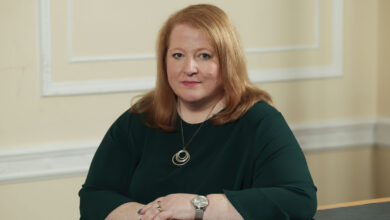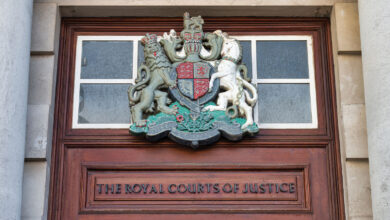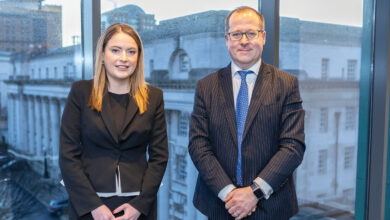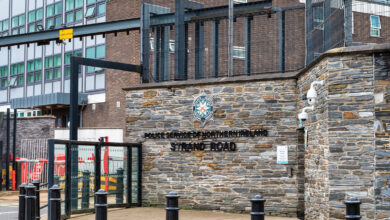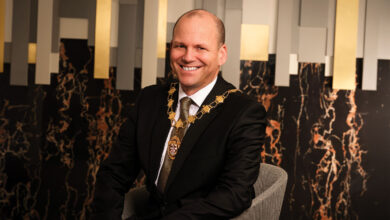Fighting human trafficking
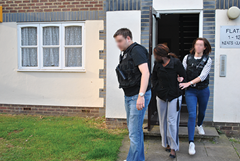 Stormont has the opportunity to strengthen its laws against human trafficking. Peter Cheney sums up the debate on how to tackle this modern day slave trade.
Stormont has the opportunity to strengthen its laws against human trafficking. Peter Cheney sums up the debate on how to tackle this modern day slave trade.
Two hundred years ago, anti-slavery campaigners in Belfast successfully fought to keep the slave trade out of the city. Northern Ireland now has an opportunity to tackle its modern-day counterpart, human trafficking, by introducing tougher laws to fight the crime.
Ninety-two people have been rescued from traffickers in the last five years but the ‘trade in people’ may be much larger. Prostitution accounts for two-thirds of cases but trafficking also includes forced labour in workplaces or in the home.
“We don’t know the real scale of the problem but the PSNI believe we are only seeing the tip of the iceberg,” says Gemma Wilson, a campaigner with the Belfast Abolition Collective. “Victims are men and women, adults and children, from Northern Ireland and from further afield.”
Rescued victims have come from as far as China and Zimbabwe. Wilson’s group is part of the No More Traffik campaign (a coalition of ethnic minority groups, businesses and Christian youth work agencies) which sees a real opportunity for Northern Ireland to lead the way.
The UK adopted the European Convention on Action against Trafficking in Human Beings in March 2011. The Northern Ireland Assembly must put this into law by 6 April 2013 and human trafficking is a major theme in two bills currently being debated at Stormont.
Trafficking people into the UK for the sexual or labour exploitation is already outlawed under the Sexual Offences Act 2003 and the Asylum and Immigration (Treatment of Claimants, etc.) Act 2004.
Justice Minister David Ford’s Criminal Justice Bill would create two new offences: trafficking a person within the UK; and trafficking a person between countries outside the UK e.g. across Europe.
Convictions for either offence could result in a fine or a sentence of up to six months on summary conviction in a magistrates’ court. In more serious causes, on indictment in a crown court, sentences of up to 14 years would be available.
Before that Bill’s introduction, No More Traffik warned against Northern Ireland taking a “minimalist approach” as the province had the chance to become a leader in fighting the crime.
With his party’s support, DUP MLA Lord Morrow published a draft private member’s Bill in August: the Human Trafficking and Exploitation (Further Provisions and Support for Victims) Bill.
Morrow’s proposal to outlaw prostitution has received the most attention in the media. However, this is only a small clause and the main thrust of the Bill is to set out the minimum amount of assistance and support that victims of trafficking should receive.
“Assistance and support” would include “appropriate and safe” accommodation, material assistance, medical treatment, counselling, information, translation and interpretation services, access to education, legal advice and representation, and assistance in applying for compensation.
If the police had “reasonable grounds” to believe that a person was a victim, he or she would be entitled to receive assistance and support throughout the criminal proceedings and for a further three months. That extra time would give the victim a “reflection and recovery period” during which they could make calm decisions about their future.
Traffickers often claim that the victim agreed to being trafficked but those claims would be inadmissable as evidence if they were based on threat, force, abduction, fraud or deception. The Bill would also introduce aggravating factors for sentencing e.g. if the victim were a child or a vulnerable adult.
Despite the popular perception, prostitution is not illegal in Northern Ireland. It is illegal to solicit prostitution (which includes operating brothels) or to pay a person for sex if they have been coerced into prostitution. Coercion, though, is often hard to prove.
In 1999, Sweden took a zero tolerance approach and became the first country to ban all payments for sex.
A review of the ban, published in 2010 by the Swedish Ministry of Justice, found that organised crime had been prevented, on-street prostitution had halved and there had been no increase in the overall level of prostitution. Information was limited as the practice is secretive.
The Swedish Government’s former special adviser on trafficking, Gunilla Ekberg, addressed a seminar at Stormont organised by Morrow. Ekberg said that the Swedish police opposed the policy at first but are now fully supportive. It has also been adopted in Norway and Iceland.
Liberal commentators Fionola Meredith and Graham Ellison say that criminalisation would drive the practice underground. Amnesty International’s Northern Ireland office has said that outlawing prostitution would confuse “related but separate issues” and divert resources away from the fight against trafficking. David Ford has taken the same view and says that zero tolerance would be hard to enforce. However, the European Women’s Lobby has called for an EU-wide ban, as it views all prostitution as a form of exploitation.
Ekberg said that prostitution could not be driven completely underground as pimps and clients still needed to communicate, and those communications could be intercepted by police. Lord Morrow had planned to introduce his Bill before Christmas. He will follow the Criminal Justice Bill’s progress to see whether Ford adopts his clauses. Other groups have proposed a minimum sentence for using trafficked prostitutes (Evangelical Alliance) and more training for professionals working with trafficked children (NSPCC).
Ford has indicated that he may bring forward amendments to ensure that human trafficking offences are tried in the crown court (after lobbying by the Justice Committee) and make a support package for victims a legal requirement (as Morrow had suggested).
The Minister hopes that the Criminal Justice Bill will pass through the Assembly before the Easter recess, which starts on 22 March. The Bill should then receive royal assent and become law just after Easter.
Abolishing human trafficking is “a worthy aim,” Gemma Wilson says, but she acknowledges that modern slavery is a complex and constantly changing problem. If one individual can be rescued, though, there is “scope to abolish human trafficking and there is certainly value in trying.”
Human trafficking: potential victims rescued
| Year | Sexual | Forced labour | Domestic servitude | Unknown | Total |
| 2008-2009 | 6 | 3 | 2 | – | 11 |
| 2009-2010 | 17 | 3 | 2 | 3 | 25 |
| 2010-2011 | 18 | 5 | – | – | 23 |
| 2011-2012 | 24 | 9 | – | – | 33 |
Warning signs: practical examples
Factory workers wearing unsuitable clothing or living in overcrowded accommodation may be victims of labour trafficking, according to by the UK-wide Blue Blindfold campaign. The campaign, supported by Crimestoppers, lists common warning signs for trafficking. Other suspicious activities include minibuses picking up foreign workers at unusual hours of the day and night, or employers holding their workers’ passports.
More information can be found at www.blueblindfold.co.uk and Crimestoppers can be contacted on 0800 555 111.

